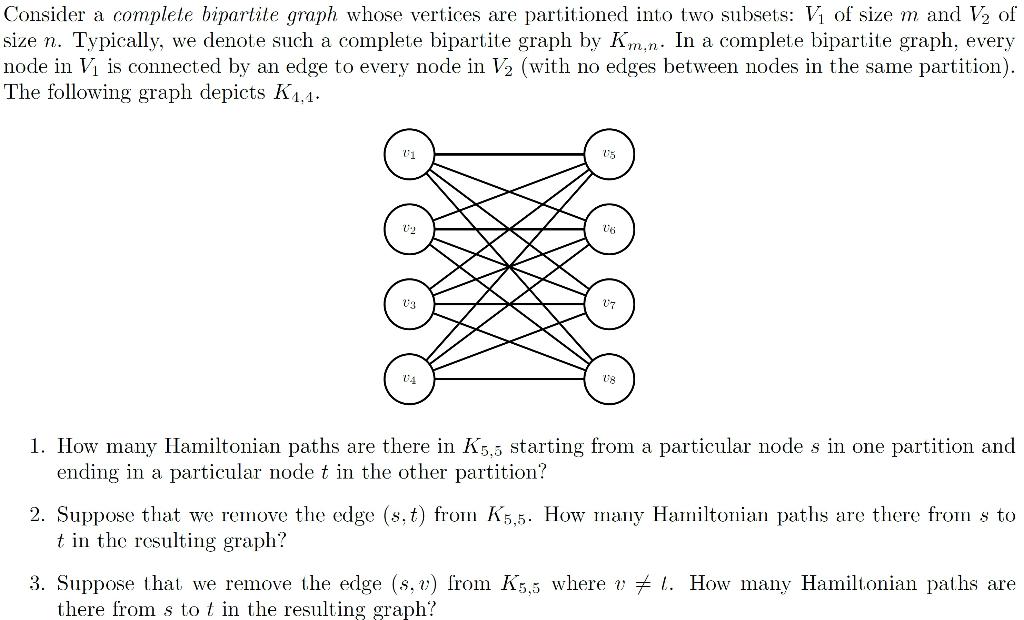Answered step by step
Verified Expert Solution
Question
1 Approved Answer
Consider a complete bipartite graph whose vertices are partitioned into two subsets: V of size m and V2 of size n. Typically, we denote

Consider a complete bipartite graph whose vertices are partitioned into two subsets: V of size m and V2 of size n. Typically, we denote such a complete bipartite graph by Km,n. In a complete bipartite graph, every node in V is connected by an edge to every node in V2 (with no edges between nodes in the same partition). The following graph depicts K.1. 1 U5 V6 U2 V3 VA 1. How many Hamiltonian paths are there in K5,5 starting from a particular node s in one partition and ending in a particular node t in the other partition? 2. Suppose that we remove the edge (s, t) from K5,5. How many Hamiltonian paths are there from s to t in the resulting graph? 3. Suppose that we remove the edge (s, v) from K5,5 where 1. How many Hamiltonian paths are there from s to t in the resulting graph?
Step by Step Solution
There are 3 Steps involved in it
Step: 1

Get Instant Access to Expert-Tailored Solutions
See step-by-step solutions with expert insights and AI powered tools for academic success
Step: 2

Step: 3

Ace Your Homework with AI
Get the answers you need in no time with our AI-driven, step-by-step assistance
Get Started


